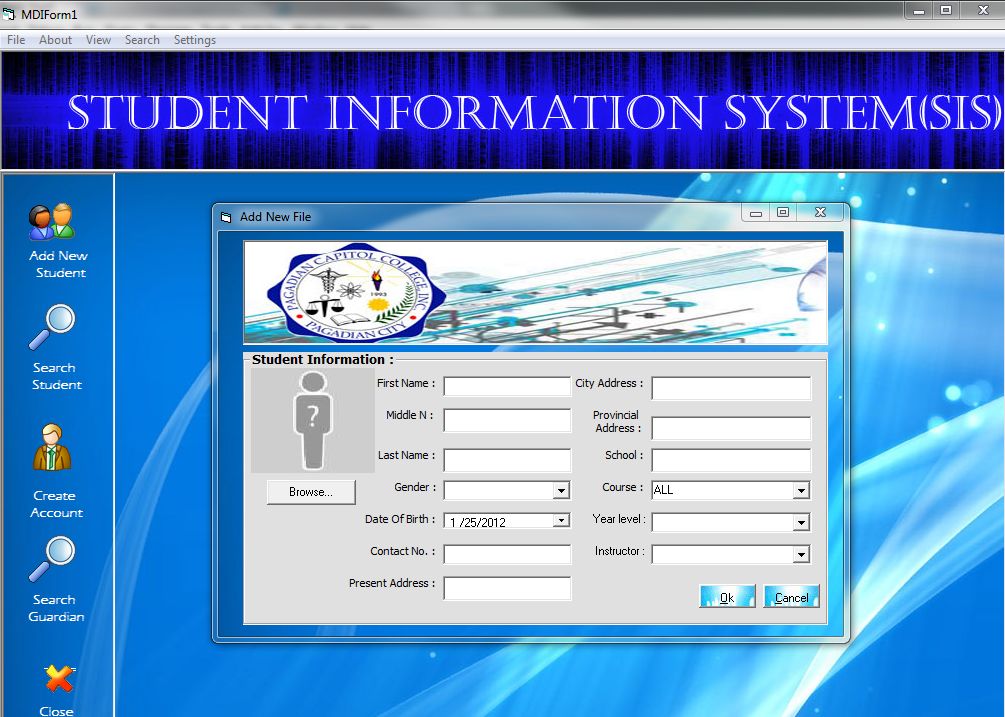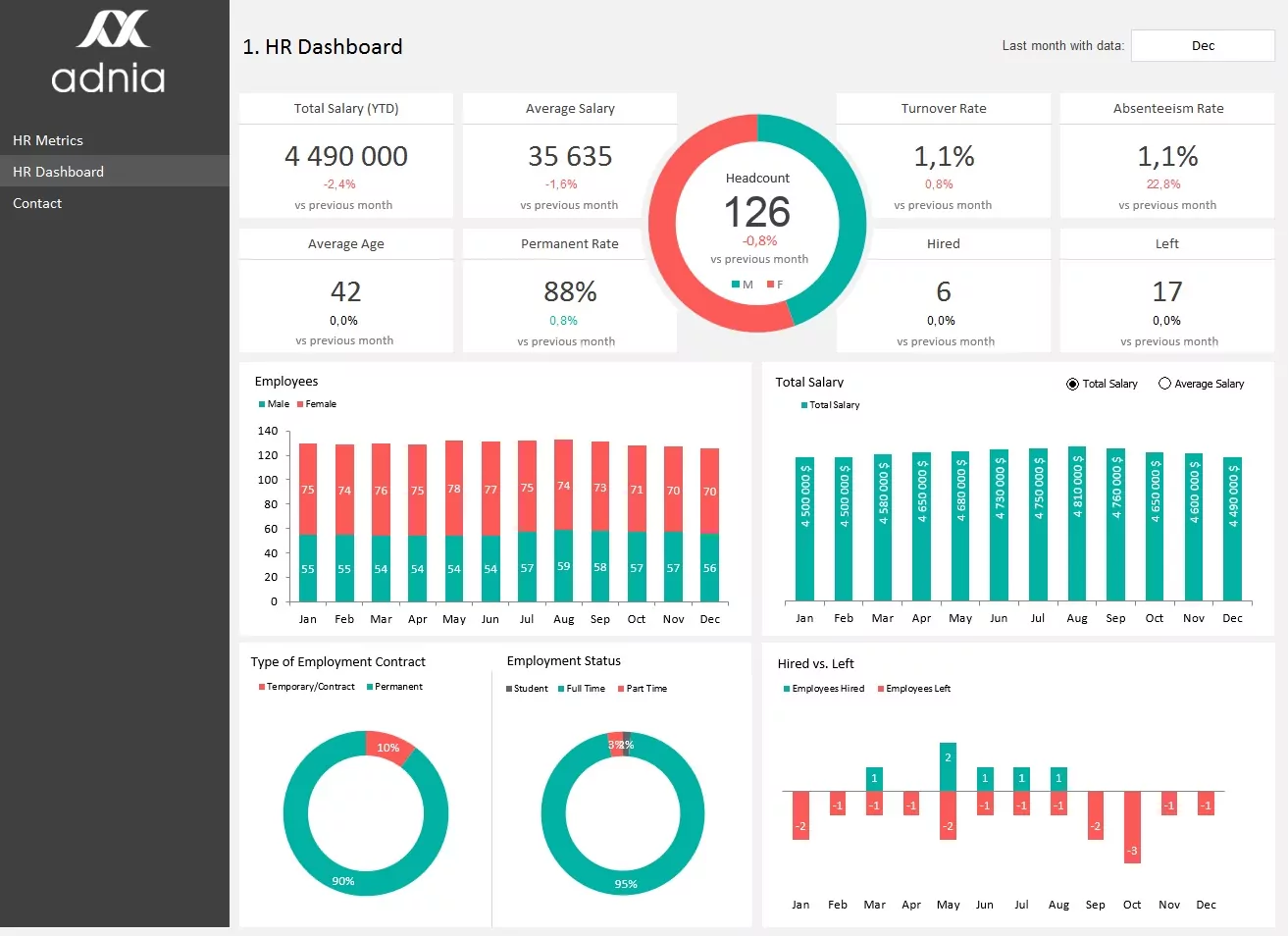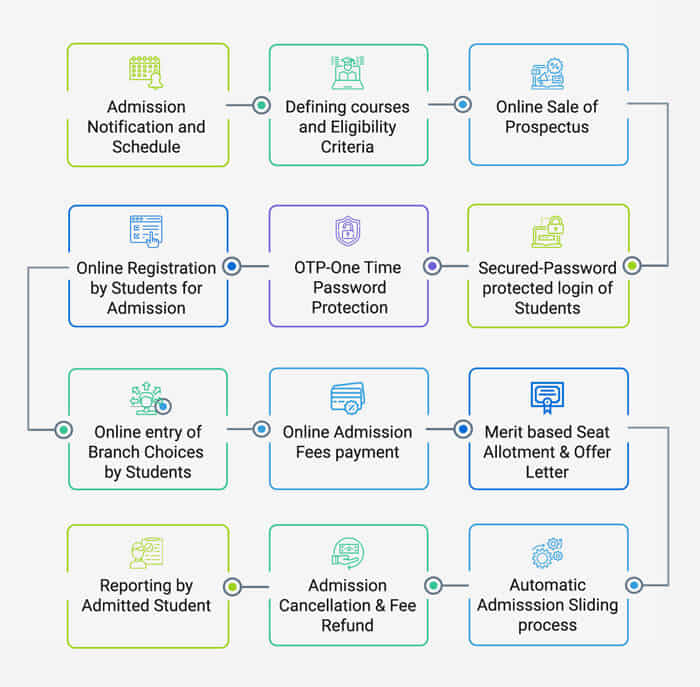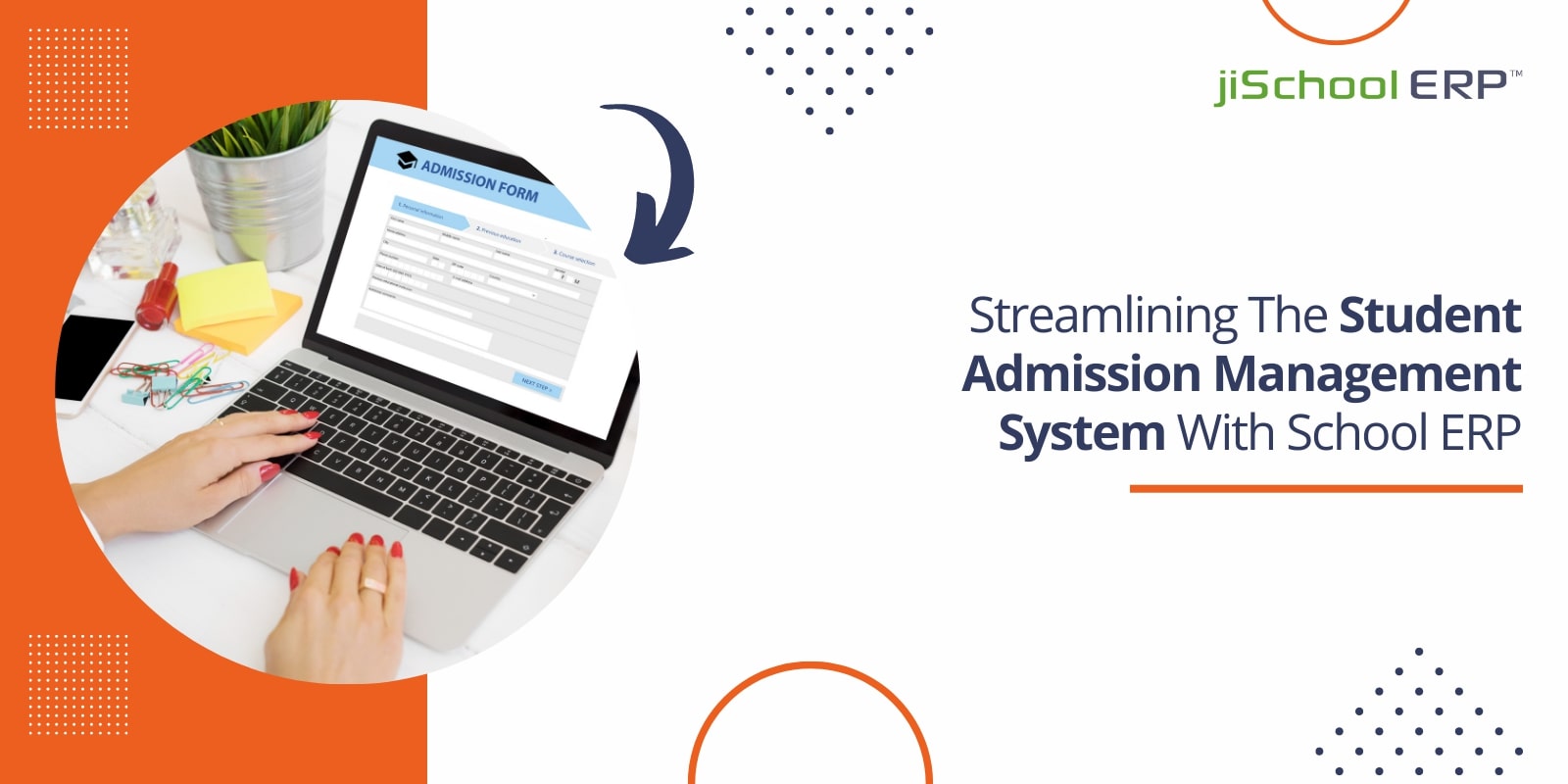COLLEGE ADMISSION MANAGEMENT SYSTEM Presentation
| Introduction to College Admission Management System | ||
|---|---|---|
| A College Admission Management System is a software tool used by educational institutions to streamline and automate the college admission process. It helps colleges and universities manage the entire admission lifecycle, from application submission to enrollment. The system improves efficiency, reduces manual work, and provides a seamless experience for both applicants and administrators. | ||
| 1 | ||
| Key Features of a College Admission Management System | ||
|---|---|---|
| Online Application: The system allows applicants to submit their applications online, eliminating the need for paper-based forms. Document Management: It enables the management and organization of applicant documents, such as transcripts, recommendation letters, and essays. Communication Tools: The system includes features for email notifications, chat support, and SMS alerts to keep applicants informed about their application status. | ||
| 2 | ||
| Benefits of a College Admission Management System | ||
|---|---|---|
| Time Savings: The system automates manual tasks, reducing the time and effort required for processing applications. Enhanced Data Accuracy: It minimizes errors by digitizing and validating applicant data, ensuring accurate and reliable information. Improved Applicant Experience: The system provides a user-friendly interface, making it easier for applicants to navigate and submit their applications. | ||
| 3 | ||
| Admissions Workflow Management | ||
|---|---|---|
| Application Review: The system allows administrators to review and evaluate applications, track applicant profiles, and make admission decisions. Interview Scheduling: It enables the scheduling of interviews and facilitates communication between applicants and interviewers. Enrollment Management: The system assists in managing the enrollment process, including fee payments, document verification, and class assignment. | ||
| 4 | ||
| Integration with Other Systems | ||
|---|---|---|
| Student Information System (SIS): The admission management system integrates with the SIS to seamlessly transfer student data once admitted. Financial Aid Management: It integrates with financial aid systems to streamline the process of awarding scholarships and grants. CRM Integration: The system can be integrated with CRM systems to manage prospective student inquiries and track marketing campaigns. | ||
| 5 | ||
| Security and Privacy Considerations | ||
|---|---|---|
| Data Encryption: The system ensures that sensitive applicant data is encrypted to protect it from unauthorized access. Role-Based Access Control: It allows administrators to assign different levels of access to users based on their roles and responsibilities. Compliance with Data Protection Regulations: The system complies with data protection regulations, such as GDPR or CCPA, to safeguard applicant data. | ||
| 6 | ||
| Reporting and Analytics | ||
|---|---|---|
| Dashboard and Reports: The system provides real-time dashboards and customizable reports to track admission metrics and monitor progress. Predictive Analytics: It uses data analysis techniques to forecast enrollment trends and identify areas for improvement in the admission process. Applicant Demographics: The system captures demographic information about applicants, enabling institutions to analyze their applicant pool. | ||
| 7 | ||
| Successful Implementations of College Admission Management Systems | ||
|---|---|---|
| Harvard University: Implemented an admission management system to streamline their admission process and enhance applicant experience. Stanford University: Utilized a system to automate document management, resulting in increased efficiency and reduced paperwork. University of Texas at Austin: Implemented a system to integrate their admission process with their CRM system, improving communication with prospective students. | ||
| 8 | ||
| Best Practices for Implementing a College Admission Management System | ||
|---|---|---|
| Define Clear Objectives: Clearly define the goals and objectives you want to achieve with the system implementation. Involve Stakeholders: Engage all relevant stakeholders, including administrators, admission officers, and IT personnel, in the decision-making process. Provide Training and Support: Ensure that all users receive adequate training and ongoing support to maximize the benefits of the system. | ||
| 9 | ||
| Conclusion | ||
|---|---|---|
| A College Admission Management System is a valuable tool for educational institutions to streamline and automate the college admission process. It offers numerous benefits, including time savings, improved data accuracy, and enhanced applicant experience. By implementing best practices and involving stakeholders, institutions can successfully leverage these systems to achieve their admission goals. | ||
| 10 | ||
| References (download PPTX file for details) | ||
|---|---|---|
| College Management System. (2021). Retrieved ... Your second bullet... Your third bullet... |  | |
| 11 | ||








